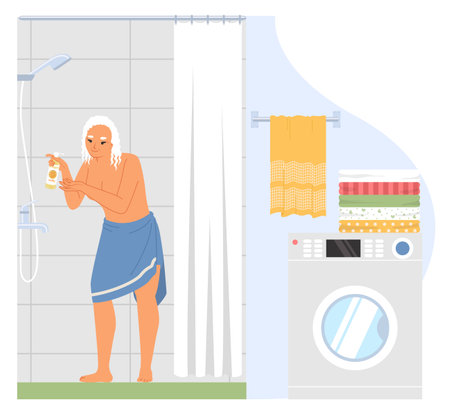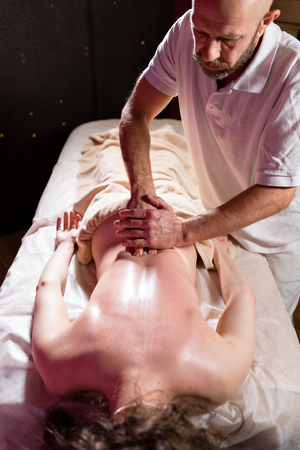Understanding Abhyanga in Indian Culture
In the rich tapestry of Indian tradition, Abhyanga, or oil massage, holds a place of great reverence and importance. Deeply rooted in the principles of Ayurveda—the ancient system of holistic healing—Abhyanga is much more than a simple physical treatment. It embodies a ritual that nurtures the body, mind, and spirit, reflecting India’s time-honoured wisdom on self-care and wellness. Traditionally performed with warm herbal oils tailored to one’s unique constitution (dosha), Abhyanga is designed to restore balance and vitality while fostering deep relaxation.
The practice of Abhyanga dates back thousands of years, with references found in classical Ayurvedic texts such as the Charaka Samhita and Sushruta Samhita. In Indian households, especially among elders and caregivers, regular oil massage is considered essential for maintaining health, enhancing flexibility, and preventing ailments. Beyond its physical benefits, Abhyanga is believed to calm the nervous system, improve sleep quality, and promote emotional well-being. By integrating natural oils infused with traditional herbs like ashwagandha, bala, or sesame, this sacred art of touch brings holistic harmony—making it an integral part of daily routines and rituals in Indian culture.
Whether practiced at home by family members or administered by skilled Ayurvedic therapists, Abhyanga exemplifies India’s approach to preventive health care. Its gentle yet profound techniques are not only intended to relieve aches such as back pain but also to cultivate a sense of connection and self-respect. Embracing Abhyanga means honouring both ancient traditions and modern needs for comfort, healing, and holistic rejuvenation.
2. Traditional Oils Preferred for Back Pain Relief
In Indian tradition, the selection of oil is a vital aspect of Abhyanga, especially when addressing back pain. Ayurveda, the ancient science of life, recommends various herbal and medicated oils that are locally sourced and prepared as per traditional recipes. These oils not only lubricate and nourish the tissues but also provide deep therapeutic relief from pain and stiffness.
Popular Abhyanga Oils in India
The table below highlights some of the most commonly used oils for back pain relief during Abhyanga, their local names, and their Ayurvedic properties:
| Oil Name | Local/Traditional Name | Main Ingredients | Pain-Relieving Properties (Ayurveda) |
|---|---|---|---|
| Mahanarayana Oil | महानारायण तेल (Mahanarayana Taila) | Sandalwood, Ashwagandha, Bala, Sesame Oil | Reduces Vata dosha, soothes nerve pain, improves flexibility |
| Kottamchukkadi Oil | കോട്ടംചുക്കാടി തൈലം (Kottamchukkadi Thailam) | Kottam (Saussurea lappa), Chukku (Dry Ginger), Tila oil | Relieves muscular aches, reduces inflammation, enhances circulation |
| Dhanwantharam Oil | ധന്വന്തരം തൈലം (Dhanwantharam Thailam) | Bala, Dasamoola herbs, Sesame Oil | Strengthens muscles and joints, supports recovery post-injury |
| Sahacharadi Oil | സഹചാരാദി തൈലം (Sahacharadi Thailam) | Sahachara (Barleria prionitis), Milk, Sesame Oil | Alleviates lower back pain, helpful in sciatica and lumbar spondylosis |
| Nirgundi Oil | निर्गुंडी तेल (Nirgundi Taila) | Nirgundi leaves (Vitex negundo), Sesame/Mustard Oil | Anti-inflammatory, reduces swelling and chronic pain in back muscles |
| Karpuradi Oil | कर्पूरादि तेल (Karpuradi Taila) | Camphor, Coconut/Sesame Oil | Cools inflamed tissues, relieves stiffness and spasms quickly |
How These Oils Work According to Ayurveda
Ayurveda attributes most back pain to aggravated Vata dosha. The above oils are formulated with herbs that pacify Vata while providing warmth or cooling effects as needed. For instance, Mahanarayana oil is revered for its deep tissue penetration and nourishing qualities that reduce dryness and nerve discomfort. Similarly, Kottamchukkadi oil’s ginger content offers a warming action ideal for chronic muscle tension. Most oils use sesame as their base due to its unctuous nature and ability to carry herbs deep into tissues.
Selecting the Right Oil for You
The choice of oil depends on individual constitution (prakriti), severity of pain, and underlying conditions. Consulting an Ayurvedic practitioner ensures you benefit from an oil blend tailored to your needs—reflecting India’s rich tradition of personalized healing through Abhyanga.

3. Preparation Before Abhyanga Massage
Warming the Oil: The First Step to Healing
In Indian tradition, the preparation for Abhyanga oil massage begins with warming the oil. Using pure oils such as sesame (til ka tel) or coconut oil is common in Indian households. The chosen oil is gently warmed, typically using a double boiler or by placing the container in hot water. This ensures the oil reaches a lukewarm temperature, which helps open pores and allows deeper absorption into the skin, maximizing its therapeutic effects for back pain relief.
Creating a Calming Environment
Setting up a peaceful and calming environment is considered essential in Indian homes before beginning Abhyanga. Many families use soft cotton towels or bedsheets on the massage surface. Lighting an agarbatti (incense stick) or diya (oil lamp) and playing soothing devotional music like bhajans can help foster a serene atmosphere. These simple rituals are believed to calm the mind and invite positivity, making the massage a holistic experience rather than just a physical treatment.
Preparing the Body and Mind
Before starting the massage, it is customary to take a few moments for gentle stretching or deep breathing (pranayama). In many Indian households, elders recommend sitting quietly and offering a short prayer or expressing gratitude for health. This mindful approach prepares both body and mind, allowing one to fully receive the benefits of Abhyanga. Wearing loose, comfortable clothing or a dhoti/lungi is preferred so that movement is not restricted during the massage process.
Key Points to Remember
- Always check the temperature of the oil before application to avoid burns.
- Choose a well-ventilated yet draft-free area.
- Keep all essentials—oil, towels, water—within easy reach before beginning.
A Tradition Passed Down Generations
The steps of warming oil, creating ambience, and preparing oneself have been passed down through generations in India. Following these preparations not only enhances physical relief from back pain but also nurtures emotional wellbeing, embodying the slow, caring touch characteristic of Indian family traditions.
4. Step-by-Step Abhyanga Techniques for the Back
Introduction to Back-Focused Abhyanga
In traditional Indian households, Abhyanga is performed with deep respect and gentle mindfulness, especially when caring for elders. The following steps outline the authentic methods of massaging the back region, focusing on comfort, pain relief, and the balancing of vital energies through Marma points.
Preparation Before Massage
- Warm the chosen Ayurvedic oil (such as Mahanarayan or Sesame) to a comfortable temperature.
- Ensure the room is quiet and draught-free, placing a soft towel or mat beneath the recipient.
- Invite the person to lie face down, supporting ankles and forehead for relaxation.
Main Massage Strokes & Techniques
| Technique | Description | Suitable For |
|---|---|---|
| Effleurage (Long Strokes) | Using both palms, glide from lower back upwards towards shoulders in slow, steady motions. | Elders & Adults (promotes circulation) |
| Petrissage (Kneading) | Knead gently along muscles on either side of the spine, avoiding direct pressure on vertebrae. | Tightness relief; suitable for moderate discomfort |
| Marma Point Activation | Circular motion with gentle pressure over key Marma points (Kati, Prsta, Vrihati) for energy flow. | Pain relief; balancing energy for all ages |
| Tapping (Tapotement) | Light rhythmic tapping with cupped hands along muscle bands for revitalization. | Adults seeking invigoration; avoid in severe pain |
| Feathering Finish | Use fingertips to make light feathery strokes from spine outward to relax nerves and conclude session. | Elders & sensitive individuals |
Rhythm and Pressure Guidance
- Pressure: Always start with gentle pressure and adjust according to comfort. Elders typically require lighter touch, while adults may benefit from medium intensity.
- Rhythm: Maintain a slow, consistent rhythm to promote relaxation and allow the oil to nourish tissues.
- Cultural Note: In Indian tradition, it is common to chant softly or play soothing bhajans during massage for added healing ambience.
Simple Routine Example for Daily Practice
- Bathe or wipe the back clean before starting.
- Apply warm oil evenly using long strokes from lower back upward (5-7 times).
- Knead muscles gently on each side of spine (3-5 minutes).
- Circular motions over Marma points: Kati (lower back), Prsta (mid-back), Vrihati (upper back) for 1 minute each.
- Finish with feathering strokes outward from spine to sides of back (2 minutes).
Cautions for Elders
- Avoid excessive pressure on bony areas or existing injuries.
- If there is severe pain or recent surgery, consult an Ayurvedic physician before beginning massage therapy.
This step-by-step approach brings together time-honoured Indian wisdom and practical care to relieve back pain and nurture well-being in elders and adults alike.
5. Aftercare and Relaxation Post-Massage
Honouring the Body’s Need for Rest
In Indian tradition, the care you give your body after an Abhyanga oil massage is considered as important as the massage itself, especially when addressing back pain. Elders often advise that one should allow ample time for rest immediately following the massage. Avoid strenuous activity and instead, recline comfortably in a quiet space. This period of stillness allows the warm herbal oils to deeply penetrate the tissues, further soothing muscular discomfort and nourishing the joints.
The Healing Ritual of Herbal Baths
A time-honoured practice is to follow Abhyanga with a gentle herbal bath. Traditional ingredients such as neem leaves, tulsi (holy basil), or dried rose petals are commonly infused in warm water. Bathing in this aromatic water not only helps remove excess oil but also imparts additional healing properties from the herbs, supporting skin health and enhancing relaxation. The steam and warmth from such baths aid in opening the pores, allowing deeper absorption of the therapeutic oils.
Simple Home Remedies for Enhanced Relief
Many Indian households recommend sipping on warm herbal teas post-massage—like ginger or cumin water—to support internal detoxification and comfort. Wearing loose, comfortable cotton clothing after bathing helps the skin breathe and prolongs the benefits of the treatment.
Mindful Silence and Gentle Movements
The wisdom of Ayurveda encourages observing a few minutes of silence or gentle breathing exercises after your Abhyanga session. This mindful pause calms both body and mind, nurturing an inner sense of tranquility that complements physical relief. By following these traditional aftercare rituals, one can truly maximise the healing effects of Abhyanga oil massage for back pain, honouring ancient Indian wisdom in every step.
6. Precautions and Local Wisdom
Guidance from Indian Elders and Ayurveda
Abhyanga, the ancient art of oil massage, is deeply rooted in Indian culture, with generations of elders and Ayurvedic practitioners sharing their wisdom for safe and effective practice. Listening to their advice not only honours tradition but also ensures your well-being.
Important Do’s According to Tradition
- Choose the Right Oil: Use oils like sesame or coconut as recommended by Ayurveda, considering your body constitution (dosha).
- Warm the Oil: Gently warming the oil before application is believed to enhance absorption and soothe muscles, especially beneficial for back pain relief.
- Gentle Pressure: Elders advise using moderate pressure with circular motions on joints and long strokes on muscles. The focus should be on comfort, not force.
- Consistency Matters: Regular Abhyanga, ideally in the morning before bath, is a cherished routine that brings cumulative benefits for back health.
Important Don’ts as Per Cultural Beliefs
- Avoid When Unwell: Elders caution against performing Abhyanga during fever, indigestion, or acute illness; let the body recover first.
- No Massage Over Injuries: Do not massage areas with open wounds, rashes, or severe inflammation. Wait until healing occurs.
- Avoid Immediately After Meals: As per tradition, never undertake oil massage right after eating; wait at least an hour to allow proper digestion.
Cultural Considerations and Contraindications
In many Indian homes, it is common to seek guidance from family elders or local vaidyas (Ayurvedic healers) before beginning new wellness practices. It is also customary to respect modesty and privacy during massage sessions, especially when performed at home. Pregnant women, those with chronic medical conditions, or anyone experiencing unusual back pain should consult a qualified healthcare provider or Ayurvedic practitioner before starting Abhyanga. Remember, every individual is unique—what suits one may not suit another.
Practical Advice for Safety
If you are new to Abhyanga or have sensitive skin, do a patch test with the chosen oil first. Prepare your space carefully: ensure warmth and quiet to relax both body and mind. After massage, allow the oil to remain on the skin for 15-30 minutes before bathing with lukewarm water. Embrace this ritual with mindfulness—respecting both your body’s signals and the time-honoured wisdom passed down through Indian tradition.

